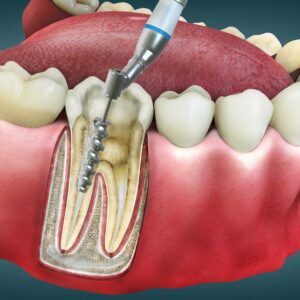Tooth pain can be confusing for many patients because it often radiates, shifts, or feels inconsistent. A sensitive tooth might feel normal one day and painful the next. In some cases, the pain may even seem to come from an entirely different tooth. This is why dental professionals rely on a scientific process known as tooth pain mapping. With modern diagnostic tools, dentists can pinpoint the exact source of pain and determine whether a patient needs restorative treatments such as a root canal in Anchorage or other targeted care.
Understanding how tooth pain mapping works helps patients feel more confident and informed when making decisions related to their dental health. In this blog, we explore the science behind tooth pain mapping and how it plays a crucial role in determining when a root canal in Alaska is the best solution.
What Is Tooth Pain Mapping
Tooth pain mapping is a systematic method used by dentists to identify the precise source, type, and severity of dental pain. Because pain can radiate through nerves in the mouth, identifying the problem area without advanced diagnostic techniques can be difficult. Tooth pain mapping helps organize the symptoms into clear patterns that point to a specific cause.
This process blends patient feedback, physical examination, and advanced diagnostic tools to form a complete picture of the tooth’s condition. It eliminates guesswork and ensures the correct tooth receives the right treatment.
Why Tooth Pain Can Be Hard to Locate
Tooth pain is not like pain in other parts of the body. The nerves inside teeth are extremely sensitive and can send signals that feel misleading.
Pain Can Radiate
A damaged or infected tooth can send pain signals to surrounding teeth, the jaw, or even the ear. This makes it feel like the pain is coming from multiple areas.
Nerves Are Interconnected
The nerves in the mouth share pathways with facial and jaw nerves. When one tooth is inflamed, nearby nerves may react, creating a sensation of widespread discomfort.
Referred Pain Is Common
Sometimes the source of pain is far from where the pain is felt. For example, a lower molar infection can cause pain that feels like it is in the upper jaw.
Because of these complexities, tooth pain mapping is essential for accurate diagnosis before performing procedures like a root canal in Anchorage.
How Dentists Use Tooth Pain Mapping in Diagnosis
Tooth pain mapping combines several examination techniques to create a full understanding of the pain’s origin.
1. Patient History and Symptom Details
The process begins with understanding when the pain started, what triggers it, and how often it occurs. Patients may describe pain when chewing, sensitivity to hot or cold, or spontaneous throbbing. These details provide valuable clues.
2. Visual Examination
Dentists check for visible signs such as deep cavities, fractures, gum inflammation, or worn enamel. Sometimes the issue is obvious, but other times it requires deeper investigation.
3. Percussion Testing
The dentist gently taps each tooth to determine which one triggers pain. A tooth with inflammation inside often reacts more sensitively.
4. Thermal Testing
Hot or cold stimuli are applied to the teeth. The reaction helps determine the condition of the tooth pulp. Sharp sensitivity may indicate early damage, while lingering pain often signals infection that requires treatment, such as a root canal in Alaska.
5. Bite Testing
Patients bite down on a small device that isolates pressure on each tooth. Pain during biting or release can help identify cracks or pulp inflammation.
6. Digital Imaging
X-rays, digital scans, and 3D imaging provide a clear view of the tooth’s internal structure. Dentists can see infections, deep decay, fractures, and abscesses that may not be visible to the naked eye.
Each of these steps helps map out the pain and guide the decision-making process.
How Tooth Pain Mapping Helps Determine the Need for a Root Canal
Once the pain source is identified, dentists assess whether the tooth pulp is inflamed, infected, or damaged. If the pulp cannot heal on its own, a root canal becomes necessary to save the tooth.
Identifying Pulp Inflammation
Pain that lingers after exposure to cold or heat often means the pulp is inflamed. When the inflammation is severe or irreversible, a root canal may be recommended.
Detecting Deep Cavities
If decay has reached the pulp chamber, the infection can spread quickly. Tooth pain mapping helps confirm whether the decay has crossed the point where a filling is not enough.
Locating Hidden Cracks
Cracked teeth can cause sharp pain during chewing. Sometimes these cracks are invisible on X-rays, so bite mapping helps detect them. If the crack affects the pulp, a root canal is needed to prevent infection.
Confirming Abscesses
Swelling, throbbing pain, or visible abscesses on X-rays indicate infection. Root canal treatment removes the infected tissue and stops the pain.
Dentists offering root canals in Anchorage rely on these mapped signals to make precise and informed treatment decisions.
Why Tooth Pain Mapping Improves Treatment Accuracy
Patients often fear that dentists may choose the wrong tooth for treatment, especially when pain feels generalized. Tooth pain mapping prevents this by creating a clear, evidence-based pathway toward the correct diagnosis.
Reduces Misdiagnosis
Mapping multiple pain responses helps rule out confusion between neighboring teeth.
Saves Healthy Teeth
Without proper mapping, a dentist might accidentally treat the wrong tooth. Mapping eliminates unnecessary treatment.
Provides Predictable Outcomes
Accurate mapping ensures that a root canal in Alaska is only performed when absolutely necessary and on the exact tooth that requires it.
Advanced Technology That Enhances Tooth Pain Mapping
Modern dental offices use advanced technology to enhance accuracy.
Digital X-Rays
These provide sharper images with minimal radiation.
CBCT 3D Scans
Cone beam imaging shows the tooth’s structure in three dimensions, revealing fractures, hidden canals, and infections.
Electronic Pulp Testing
This determines the vitality of the pulp and helps confirm if the tooth is alive or infected.
With these tools, mapping becomes even more precise.
How Pain Mapping Benefits Patients
Tooth pain mapping does more than diagnose. It also helps patients understand their condition clearly.
Better Communication
Dentists can show patients the exact findings and explain why treatment is needed.
Reduced Anxiety
When patients know the source of pain, they feel more confident moving forward with treatments like a root canal in Anchorage.
Prevention of Future Problems
Mapping can reveal early warning signs, allowing dentists to treat issues before they worsen.
Conclusion
Tooth pain mapping is one of the most valuable diagnostic tools in modern dentistry. It takes the mystery out of tooth pain by identifying the precise cause and the exact tooth involved. This scientific approach ensures that procedures such as a root canal in Alaska are performed only when necessary and with complete accuracy. For patients experiencing persistent tooth pain, tooth pain mapping provides clarity, reassurance, and the foundation for effective long-term treatment.
If you are experiencing unexplained dental pain, seeking professional evaluation based on accurate tooth pain mapping is the first step toward relief and restoration.



